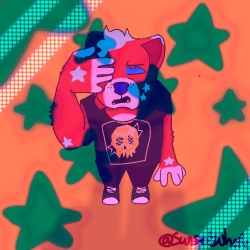intro to substance painter
This week, in our course, we learned how to utilise Adobe Substance Painter, which is currently the industry standard and is used extensively by 3D artists. When it came to the war hammer, I found it to be easy to use at first, but I found our assignment to be much harder to utilise.
We had to model, UV map, and texture a helmet for our project; the helmet may be our own design or it could be based on an already-existing helmet. I chose the great helm, which was popular throughout mediaeval Europe and offered better protection for the head and neck due to its three steel plates fused together.
I took some artistic licence to simplify the helmet and make it easier for me to model, but I also used a few sources so I could pick and choose different aspects I liked from them and mesh them together. Here are some examples of the types of great helms I was taking inspiration from:


In order to model the helmet and get me going in the proper direction, I also used a video tutorial. To reach my final product, I combined extrusion, beveling, scaling, and vertices editing. I also employed cylinders on the helm’s face plate to obtain the holes, which I accomplished by using a boolean modifier, which made my life a little easier.
Here is the video I used whenever I was stuck on certain modelling aspects:
I had a lot of trouble getting the texture of my helmet to look right with Substance Painter. For example, every time I would poly fill a quad on one side of the helmet, another quad or quads would also fill with that material on the other side. I had to start over a few times before returning to Blender and playing around with the UV maps, which seemed to solve most of my problems.
I believed the model would seem quite boring if it were all made of the same material, so I chose to make the top portion of the face plate and the extruding portion where the eye openings are made of brass. In order to give the helmet an aged appearance, I also used smart maps to add rust and dust, although I wasn’t quite successful in getting the desired result.
Although I’m not totally satisfied with my model and believe I may have chosen something too difficult for me to understand—I’m still having trouble with several concepts in Blender and Substance Painter—I think I did the best I could at this time.

